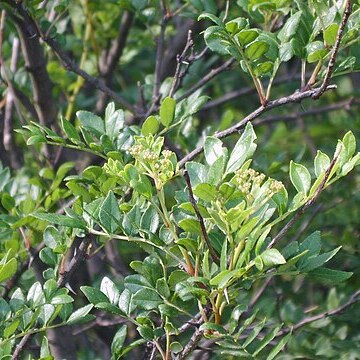A shrub that loses its leaves. It grows 1-3 m high. It has prickles. The young branches are purple. The leaves have leaflets along the stalk. There are 11-21 leaflets and they are narrowly sword shaped and 2-5 cm long by 1-1.5 cm wide. There are teeth along the edge. Flowers are small and yellowish-green and of one sex. Male and female flowers are on separate trees. They are in groups in the axils of leaves or at the ends of branches. The fruit follicles are purple-red. The seeds are bluish-black and shiny.

